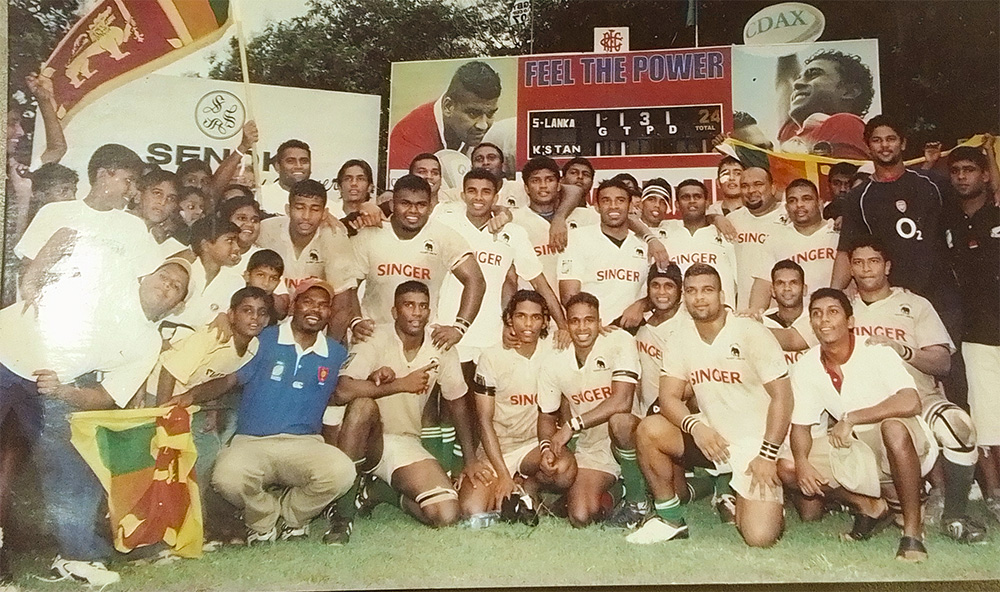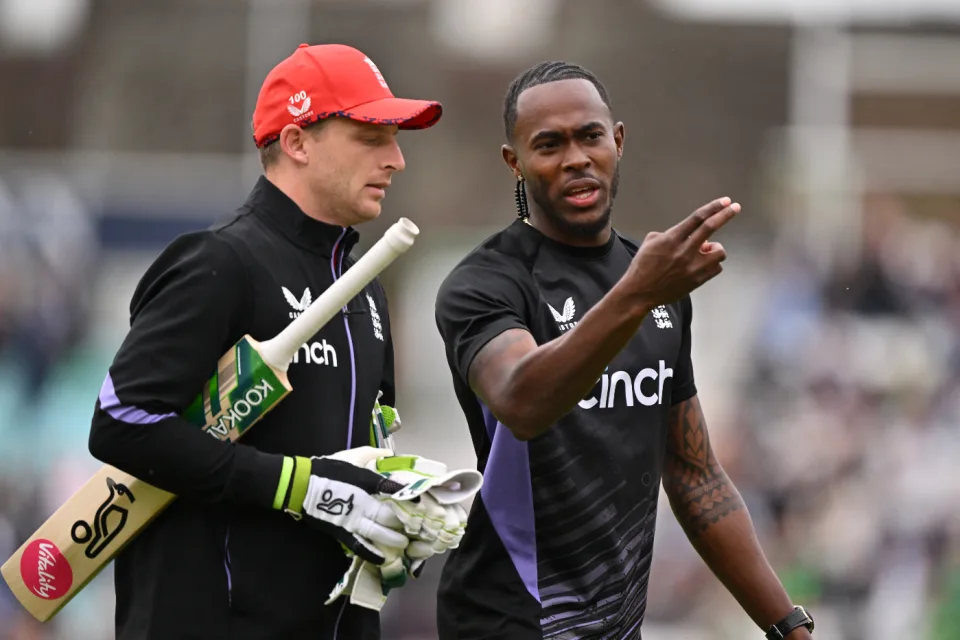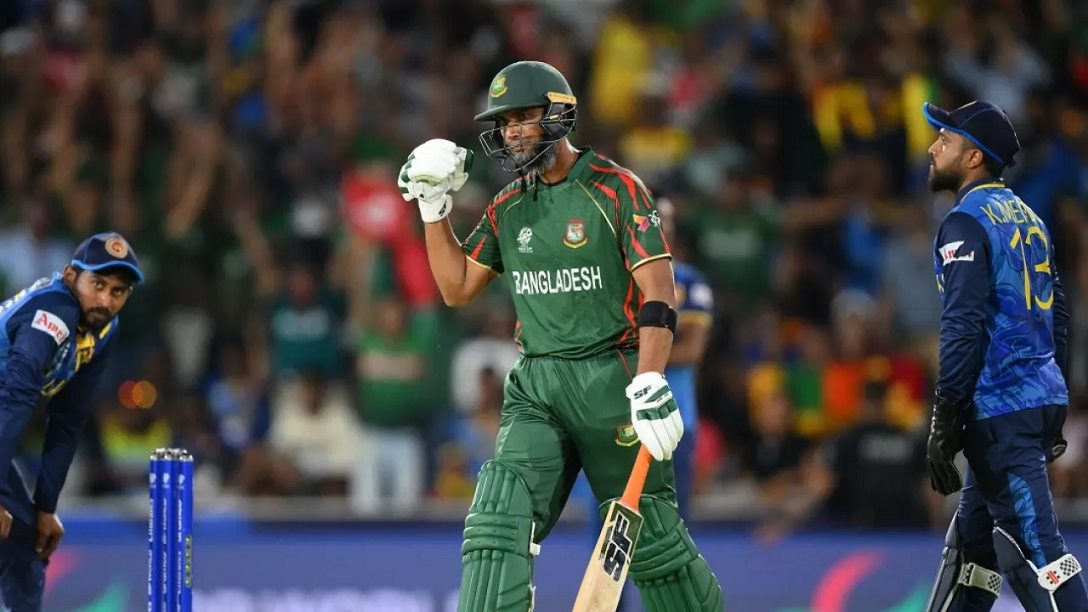Sports
A piece of Sri Lanka’s rugby history which can produce goosebumps

by A Special Sports Correspondent
At a time when Sri Lanka is getting ready to face challenges at the upcoming Asian Rugby Tournament’s Division 1 Segment our minds run back to the times when these islanders were competing against the best teams in Asia.
Just for the record Sri Lanka is now forced to work its way up from the Division 1 segment and qualify for a slot among the best four teams who are playing in a segment known as the ‘Asia Rugby Championship’. Currently the teams in that group- which can be billed as the best four teams of Asia- comprises South Korea, Hong Kong China, Malaysia and United Arab Emirates (UAE). On a sarcastic note, I’m sure Sri Lanka remembers playing in this division and not being disgraced; even though they went down fighting on some occasions. There were also many victories in this division for Sri Lanka which produced sweet memories for the rugby loving islanders.
The years which this writer wants to recall are 2005 and 2006 and Sri Lanka’s best players were put through their paces by New Zealand born Coach George Simpkins; who was contracted as the national coach till the World Cup Qualifiers ended. He was given a contract by Sri Lanka Rugby which was at that time headed by former national player Priyantha Ekanayake. Luckily for Sri Lanka rugby there was no rift between the Kandy ‘elite’ and the Colombo ‘camp’. Hence national rugby didn’t suffer. Whatever challenges that cropped up as national assignments were fed with the best resources.
This was a time when Sri Lanka had players like skipper Sajith Mallikarachchi, Viraj Prashantha, Kishore Jehan, Pavithra Fernando, Dilanka Wijesekare, Dushanth Lewke, Amjad Buksh, Fazil Marija, Pradeep Liyanage, Sanjeewa Jayasinghe, Chamara Vithanage, Thushara Silva, J.Ranaweera, Dilan Ekanayake, Rajith Jayasundara, Anuradha Dharmatilake, Asanga Rodrigo, Anuranga Walpola, M.Sherifdeen, Dhanushka Perera, Zulki Hamid, Rajiv Ganapathy and D. Pushpakumra to name a few. More players were inserted to the squad as Sri Lanka gained momentum and experience in facing this world cup qualifying challenge. The first assignment for Sri Lanka was against Thailand and it was an ‘away’ match; played in the hot and humid village called Suphan Buri; which is 150 km away from Bangkok. Just a few kilo metres away from Suphan Buri is ‘Kanchana Buri’ where some parts of the film ‘Bridge on the River Kwai’ was filmed.
This was also the time when most of the players in the squad were at their peak; having played about a decade of rugby at senior level. The players were training mostly at CR&FC and this writer remembers hooker Viraj Prashantha making a kind of statement while casually bumping into me in the form of “If we cannot beat Thailand after all these training sessions, then we might never be capable of achieving such a feat in this lifetime”. In other words, the players were oozing with confidence and their body language said it all.
The man who made the change was Simpkin. The players were taught to think, eat and train like professionals; even though there not one among them who was even a semi professional at that time baring the pint-sized Silva who was employed in the Army. Silva was also a serious football player and much faith was placed on him to man the last line of defence as full back.
The match was scheduled at 3 pm and the heat was killing. Sri Lanka struggled hard to cross the Thailand goal line and when no one could Marija sliced through the defence using individual brilliance. The scores were deadlocked 38 all at one time in the second half and the host team was threatening to spoil Sri Lanka’s hopes, but the islanders won the contest 48-38 in the end.
Sri Lanka’s next challenge was in Colombo and the team they had to face was Singapore, which at that time was an outfit that was ‘respected’ and feared. The match was scheduled at 2 pm and the aggressive style that the Lankans played their rugby in and the scorching heat that prevailed were too much for Singapore. Sri Lanka won 43-17.
Simpkin by this time had convinced the players to cut down on the quantity of rice they consumed. Healthy eating, extended hours in the gym plus the focus on the goal (which was looking at participation at the international stage) lifted the thinking of the players a few notches up. Everyone knew that playing in an actual world cup was out of the question, but doing well at the ‘qualifiers’ and seeing what distance the side would go produced enough fuel to keep the players motivated.
The next challenge was against Kazakhstan which was a two-leg match with the first game scheduled in the freezing mountain city of ‘Almaty’. The Sri Lankans were given a hard time starting from preparations and the place given to the visitors to warm up was a defunct basketball court. The conditions were too cold for Sri Lanka and the result was a 25-19 defeat; Sri Lanka was beaten, but still was in with a chance when they hosted the rematch because the deference in points was just six. Simpkin worked the players in the gym and field and he drilled the thought into the players’ minds that this assignment could be successful if they thought rugby was an ‘endurance game’. Many running drills were added to the training schedule. So, Sri Lanka was going to play running rugby and avoid unwanted contact with the opposition; research done on the Kazakhstan players showed that the majority of them were mine workers and hard as rocks. This is the advantage of having a foreigner as coach who knows the opposition as much as his own chargers. Within the first quarter of the game, played at Longden Place, when the Kazakhstan players could not take the beating, they got from the smaller made Sri Lankans, they got into a fisticuff with the host players and the game was stopped for a few minutes. The Sri Lankans chose to be beaten and bruised in the brawl and chose to be focus on the game. The rest was history and Sri Lanka ran out worthy winners with a score of 24-12 in the second game.
The next assignment, however tough, had to be faced and done with. Hong Kong was a tower of strength in the Asian circuit and always proved a hurdle that Sri Lanka never could clear. To make matters worse the match was arranged to be played on a turf comprising artificial grass. After a physical game the Sri Lankans went down fighting 45-14; bowing out of the running in the world cup qualifiers. In the remaining games Japan beat Hong Kong. South Korea got the better of Hong Kong in their encounter. Japan was the only team in the 2007 world cup representing ‘Oceania/Asia after their success in the ‘qualifiers’. Back at home, New Zealand rugby legend- who was here to coach a club side- was quoted in a local newspaper saying ‘Sri Lanka got excited for no reason. Everyone knew that only Japan was going to make it to the world cup from Asia’. But for the entire rugby fraternity at home thought that what its national team achieved was remarkable!
So, this is a small piece of the proud history Sri Lanka boasts in rugby. This is a side which locked horns with the best of Asia. Sri Lanka needs to work its way up from Division 1 and slot itself in its rightful group which is the ‘Asia Rugby Championship’.
Sports
England face Australia in the battle of champions

The first truly heavyweight clash of this expanded T20 World Cup format comes freighted with both history and subplots. A rematch of the 2010 World T20 final at Kensington Oval, the match pits Jos Buttler’s defending champions – who are aiming to become the first team to retain the trophy – against the Australian winning machine, victors at the 2021 edition and current world title-holders in Test and ODI cricket. And that’s before you throw in the Ashes for afters.
Already there is added pressure on England, after the rain in Bridgetown led to a share of the points in their opener against Scotland (and that having conceded 90 runs from 10 overs without taking a wicket in a tepid bowling display). Lose to their oldest rivals and it will leave their Super 8 prospects open to being waylaid by the perils of net run-rate calculations, or worse.
The Scotland match was the third abandonment in five suffered by England, after a rain-affected home series against Pakistan, which has clearly hampered their readiness for this campaign after almost six months without playing T20 together. It does not take much for a side to click in this format – and England looked in decent shape when they did get on the field against Pakistan – but Buttler will be anxious for things to go their way on Saturday, if only to avoid further questions referencing the team’s disastrous ODI World Cup defence last year.
Australia, under the laidback leadership of Mitchell Marsh would love nothing more than to add to the English sense of jeopardy – having helped bundle them out of the tournament in India on the way to taking the crown. Their head to head record is less impressive in T20 however, with England having won six of the last seven completed encounters, as well as that 2010 final.
Despite a wobble with the bat, Australia avoided mishap against Oman earlier in the week, the experience of David Warner and Marcus Stoinis shining through in difficult batting conditions. Surfaces in the Caribbean – not to mention those games staged in the USA – have already had teams scratching their heads; rather than the “slug-fest” England had prepared for, following a high-scoring tour of the Caribbean in December, it looks as if boxing smart may be the way to go.
Speaking of Warner, this could be the last time he faces up against England in national colours – and another match-winning contribution would likely reduce the chances of them meeting again in the knockouts. On the other side of the card is Jofra Archer, fresh from an emotional maiden outing at Kensington Oval and ready to take on Australia for the first time in any format since 2020. Can Mark Wood fire up England’s campaign, as he did during last summer’s Ashes? Will Pat Cummins be back to harass the old enemy once again? Seconds out, it’s almost time to rumble.
Cummins is set to return after being rested for the Oman game, which saw Mitchell Starc leave the field with cramp. Starc is understood to be fine and could keep his place – which would likely see Nathan Ellis miss out. Marsh is still not fit to bowl, with Australia likely to continue with the allrounder combination of Stoinis and Maxwell to give them cover.
Australia (probable XI): David Warner, Travis Head, Mitchell Marsh (capt), Glenn Maxwell, Marcus Stoinis, Josh Inglis (wk), Tim David, Pat Cummins, Nathan Ellis/Mitchell Starc, Adam Zampa, Josh Hazlewood
The one change England may consider is Reece Topley coming in for Wood, with the expectation that there will be some rotation among the seamers through the course of the tournament.
England (probable XI): Phil Salt, Jos Buttler (capt & wk), Will Jacks, Jonny Bairstow, Harry Brook, Liam Livingstone, Moeen Ali, Chris Jordan, Jofra Archer, Adil Rashid, Reece Topley/Mark Wood
[Cricinfo]
Sports
South Africa up against their bogey team in batter-unfriendly New York

Once is coincidence, twice is a clue, and three times is proof.
To paraphrase Agatha Christie, that is the narrative around South Africa’s meeting with Netherlands at this T20 World Cup.
The Dutch beat South Africa at the 2022 tournament and ended their semi-final hopes in a match where South Africa appeared to be sleep walking, and then beat them again at the 2023 ODI World Cup, where they exposed South Africa’s vulnerability in the chase. If they to do the treble, not only will Netherlands take the lead in Group D, but they will offer conclusive evidence of the threat they pose to Full Members, especially South Africa.
Of course, it will take some doing after South Africa’s opening performance against Sri Lanka, where they reduced their opposition to their lowest T20I total and chased it down in fairly straightforward fashion thanks to the most stable middle-order of their white-ball era. In Aiden Markram, Tristan Stubbs, Heinrich Klaasen and David Miller, South Africa have bankers and big-hitters and, for this match, they also have the advantage of experience. They’ve already played at Eisenhower Park, and have first-hand knowledge that run-scoring doesn’t come easily;Klassen said they are prepared to use their “cricket brains” and play “smarter cricket”.
But the conditions could be good news for Netherlands, who are not naturally a line-up of big hitters and build their innings on a foundation of turning ones into twos. In other words, they tend to take a slightly more conservative approach to batting, which may work well here, but they’ll be wary of the uneven bounce of the surface and will have to come up with plans to counterattack especially against South Africa’s seamers. Their own bowlers were exemplary in Dallas and will look to build on that performance against a line-up that will likely be more proactive than Nepal’s, but who they have managed to keep quiet not once, but twice in the past. Third time’s the charm, they say.
Anrich Nortje’s stunning return to form against Sri Lanka means South Africa may not have to tinker with the bowling combination, and Gerald Coetzee and Tabraiz Shamsi may have to wait their turns to get a game. The batting line-up should be unchanged, with no space for Ryan Rickelton yet.
South Africa: Quinton de Kock (wk), Reeza Hendricks, Aiden Markam, Tristan Stubbs, Heinrich Klaasen (wk), David Miller, Marco Jansen, Keshav Maharaj, Kagiso Rabada, Ottneil Baartman, Anrich Nortje
Conditions in New York may tempt Netherlands to include an extra seamer and they have Kyle Klein in their squad. But it could come at the expense of a shortened batting line-up and they may not want to risk that.
Netherlands: Michael Levitt, Max O’Dowd, Vikramjit Singh, Sybrand Engelbrecht, Scott Edwards (capt, wk), Bas de Leede, Teja Nidamanuru, Logan van Beek, Tim Pringle, Paul van Meekeren, Vivian Kingma
[Cricinfo]
Latest News
Mustafizur, Rishad, Hridoy dazzle in Bangladesh’s tight two-wicket win over Sri Lanka

Nuwan Thushara’s last over brought Sri Lanka screaming back into the match,as he first bowled Rishad Hossain, and then nailed Taskin Ahmed in front of the stumps with a pinpoint swinging yorker. This left Bangladesh eight wickets down, with 12 runs still to get.
However, the experienced Mahmudullah was at the crease for Bangladesh, and despite some further nervy moments, pushed Bangladesh across the line off the last ball of the 19th over.
But this was a match chiefly decided by Bangladesh’s own outstanding bowling. Mustafizur Rahman was the best among them, using shorter lengths and his cutters efficiently, to claim figures of 3 for 17. Rishad Hossain’s three-for through the middle overs also kept Sri Lanka quiet.
Mustafizur was instrumental in Sri Lanka’s downward spiral through the middle overs, which culminated in a crash-and-burn end. Ultimately, their inability to find boundaries, or even rotate strike against good Bangladesh bowling resulted in their downfall. A score of 125 for 9 always seemed poor on a decent pitch, even if their bowlers made a match of it in the end.
Brief scores:
Bangladesh 125 for 8 in 19 overs (Towhid Hridoy 40, Litton Das 36; Dhanajaya de Silva 1-11, Nuwan Thushara 4-18, Wanidu Hasaranga 2-32, Matheesha Pathirana 1-27) beat Sri Lanka124 for 9 in 20 overs (Pathum Nissanka 47, Dhananjaya de Silva 21; Tanzim Hasan Sakib 1-24, Taskin Ahmed 2-25, Mustafizur Rahman 3-17, Rishad Hossain 3-22) by two wickets
[Cricinfo]












